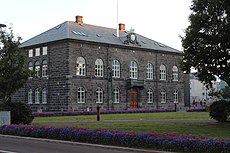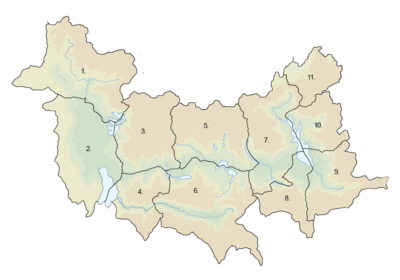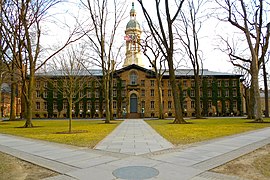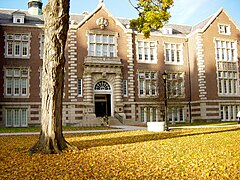Nidwalden: Difference between revisions
No edit summary |
m (1 revision imported) |
(No difference)
| |
Revision as of 19:41, 25 February 2019
Grand Duchy of Nidwalden Großherzogtum Nidwalden (German) | |
|---|---|
Motto: Remain Independent | |
Anthem: Unserer Heimatland (German) Our Homeland | |
| Nidwalden (dark green) in Lorecian Community (light green) Nidwalden (dark green) in Lorecian Community (light green) | |
| Capital | Cologne |
| Largest | Saint Moritz |
| Official languages | German |
| Demonym(s) | Nidwaldeser |
| Government | Unitary parliamentary constitutional monarchy |
| Charles Lechner | |
| Charlotte Mann | |
| Area | |
• | 41,285 km2 (15,940 sq mi) |
• Water (%) | 4.5 |
| Population | |
• 2016 estimate | 1.200.583 |
• 2011 census | 1.109.403 |
• Density | 202/km2 (523.2/sq mi) |
| GDP (PPP) | 2016 estimate |
• Total | $377.100 billion |
• Per capita | $100,991 |
| GDP (nominal) | 2016 estimate |
• Total | $391.959 billion |
• Per capita | $104,359 |
| Gini (2015) | 23.5 low |
| HDI (2015) | 0.935 very high |
| Currency | Nidwaldeser Krone (NWK) |
| Driving side | right |
| Calling code | +77 |
| Internet TLD | .nw |
Nidwalden, officially the Grand Duchy of Nidwalden (German: Großherzogtum Nidwalden) is a mountainous country located in Lorecia bordering Noordenstaat and Fyngaria to the west and north, respectively. Nidwalden is one of the wealthiest landlocked countries, it has a territory of 41,285 km<sup2 that is highly mountainous. Nidwalden is home to 3,480,314 inhabitants according to the 2017 census, making it the least-populated country in the Lorecian Community. The official language is German and although it is not considered a national language, Dutch is widely spoken and understood by the population, particularly in the west, near the border with Noordenstaat.
The Grand Duchy of Nidwalden is a unitary parliamentary constitutional monarchy with a Grand Duke as head of state and a Prime Minister as head of government. As a regionally active nation, Nidwalden is a founding member of the Lorecian Community and participates in the Bruningen Accord and the Lorecian single market.
With a very developed economy, Nidwalden has a very large welfare state providing universal health care and tertiary education for its citizens. The Nidwaldester economy is based around the financial and banking sector, the pharmaceutics and the technology with large contributions of the tourism and agriculture. The country ranks at or near the top globally in several metrics of national performance, including government transparency, civil liberties, quality of life, economic competitiveness, and human development.
History
Early history
Formation of a Duchy and the House of Lechner
Nineteenth century
Twentieth century
Industrialization and social development
Great Astyrian War
Modern history
Lorecian Community
Geography
Nidwalden is one of the smallest countries of Lorecia and the smallest sovereign nation member of the Lorecian Community. Its sovereign territory covers 41,285 km2 which are divided into plateaus and mountainous areas. To the north the country borders Fyngaria, Nidwalden is divided from this country by the Silberberge mountain chain while to the west, Nidwalden borders Noordenstaat, this border is composed by a lower mountainous chain and rivers.
While the northern and southernmost parts of the country are located in mountainous areas which turn them perfect for winter sports and touristic activities. The centre, from Cologne to Saint Moritz its dominated by low hills and lakes which make the area perfect for the agriculture and livestock although the country is bordered by a second mountain chain in the south where some of the most popular and exclusive ski resorts are located.
Flora and Fauna
The Nidwaldester climate has been perfect for the grow of Oak and Beech trees, specially in the areas of the centre but also in the hillsides and near the lakes creating many times mixed forests. The oak trees can grow up to 30–45 m. They supply large quantities of excellent hardwood timber because of their strength.
The territory of Nidwalden has been a great place for provide an habitat for many species of animals, while the centre is a preferred place for the forests some of the most found animals are the white-tailed deer or the Eurasian otter near rivers or lakes.
Climate
| Climate data for Cologne, Nidwalden (1981–2000, extremes 1947–present) | |||||||||||||
|---|---|---|---|---|---|---|---|---|---|---|---|---|---|
| Month | Jan | Feb | Mar | Apr | May | Jun | Jul | Aug | Sep | Oct | Nov | Dec | Year |
| Record high °C (°F) | 13.9 (57.0) |
18.2 (64.8) |
22.2 (72.0) |
27.0 (80.6) |
31.6 (88.9) |
35.4 (95.7) |
36.1 (97.0) |
37.9 (100.2) |
31.5 (88.7) |
26.0 (78.8) |
18.4 (65.1) |
14.6 (58.3) |
37.9 (100.2) |
| Average high °C (°F) | 3.1 (37.6) |
4.7 (40.5) |
9.1 (48.4) |
13.3 (55.9) |
17.8 (64.0) |
20.7 (69.3) |
23.2 (73.8) |
22.8 (73.0) |
18.4 (65.1) |
13.1 (55.6) |
7.3 (45.1) |
3.9 (39.0) |
13.1 (55.6) |
| Daily mean °C (°F) | 0.8 (33.4) |
1.6 (34.9) |
5.2 (41.4) |
8.7 (47.7) |
13.0 (55.4) |
15.9 (60.6) |
18.2 (64.8) |
17.7 (63.9) |
13.9 (57.0) |
9.5 (49.1) |
4.7 (40.5) |
1.8 (35.2) |
9.3 (48.7) |
| Average low °C (°F) | −1.6 (29.1) |
−1.3 (29.7) |
1.6 (34.9) |
4.4 (39.9) |
8.4 (47.1) |
11.1 (52.0) |
13.3 (55.9) |
13.0 (55.4) |
10.0 (50.0) |
6.3 (43.3) |
2.2 (36.0) |
−0.5 (31.1) |
5.6 (42.1) |
| Record low °C (°F) | −17.8 (0.0) |
−20.2 (−4.4) |
−14.4 (6.1) |
−6.9 (19.6) |
−2.1 (28.2) |
0.9 (33.6) |
4.5 (40.1) |
4.3 (39.7) |
−0.7 (30.7) |
−4.6 (23.7) |
−11.1 (12.0) |
−15.3 (4.5) |
−20.2 (−4.4) |
| Average snowy days | 8.6 | 8.0 | 4.7 | 2.1 | 0.0 | 0.0 | 0.0 | 0.0 | 0.0 | 0.1 | 2.8 | 7.3 | 33.5 |
| Source: NCA | |||||||||||||
Politics and Government

Nidwalden is considered to be one of the most developed democracies and states of justice in the world. According to the constitution adopted in 1815, the Grand Ducky is a unitary constitutional monarchy with a parliamentary system of government, wherein the Duke is the head of state and the Prime Minister is the head of government. Power is separated between the legislative, executive and judicial branches of government. The Grand Duke had the power to dissolve the legislature and used to retain executive power but since the parliamentary system of government, the duties of the monarchs is purely ceremonial and representative. During 2017 polls revealed that a 70-80% of the Nidwaldester people supported the continuation of the monarchy.
In practice, the Prime Minister exercises the executive powers and the legislative power is in charge of the Abgeordnetenkammer or Chamber of Deputies, a unicameral legislative body composed of 60 Deputies which are elected every five years during the national elections. The members of the Abgeordnetenkammer are elected by the same way the Prime Minister is, with lists and universal suffrage in all Nidwaldester territory, the consular vote has been an important issue during 2015 but the efforts of the Rechte to allow it were unsuccessful. Deputies work during the five-year term acting independently from the Monarch who was a minimum power in the organism. The building of the Abgeordnetenkammer is located in the Old Town of Cologne. The Chamber of Deputies is in charge of ratifying treaties made by the executive branch , it can also impeach members of the government if their acts are declared unconstitutional, however, this never happened.
Historically in Nidwalden, the Social Democrat party of Nidwalden and the Rechte (currently in government) have played leading political roles, the current Prime Minister is Charlotte Mann, a member of the old social democrat side of the centre-right party, Rechte. Counties in Nidwalden follow a similar system, all of them celebrate elections where the population elects a representative and the members of the Grand Council.
Administrative Divisions
Nidwalden is divided into 10 Counties which are further divided into Communes. Many of this Communes have official city status, Cologne and Saint Moritz are the largest and most populous of those.
Foreign RelationsNidwalden has long been a supporter of Lorecian political and economic integration, as a result of this, the country is a founder member of the Lorecian Community after signing the Bruningen Accord in Noordenstaat. The country maintains embassies in almost every country of Astyria, Nidwalden supports international cooperation and the peaceful settlement of disputes, recognising the need for maintaining a strong national defence through collective security, the country is also an active supporter of the international development and the international aid during catastrophes, conflicts and wars. Although there is a rising nationalism in the country like in many others of the region, the ministers of foreign affairs maintain clear and strong positions in issues like immigration, international aid and in conflicts that are often opposed to many nationalists politics. Military
The Defence Forces of Nidwalden are composed by the Army, the Air Force and the Home Guard, besides of not having a sea side, Nidwalden does maintain a small navy in bordering lakes. The forces numbers about 6,500 active personnel, including civilian employees. Its Army and Air Force are known for being one of the most modern armed forces in Astyria, this has made of Nidwalden an important factor for the actions taken in international conflicts by the Lorecian Community, this is mainly due to the fact that many of the Nidwaldester governments were pro to a common security and defense policy in the countries members of the Community. The formal commander-in-chief is Duke Charles Lechner; however, the de facto supreme decision-making is made by the Cabinet, led by the Prime Minister, a position which is currently taken by a right-centre party. EconomyThe economy of Nidwalden is one of the most stable economies in Lorecia. The political stability and the long culture of human rights has given to Nidwalden millions of safe investors creating an independent, safe and huge economy. The country has a stable and high-income market economy features moderate growth, low inflation, and a high level of innovation, the unemployment rate has been traditionally low and it is actually positioned in 2.5% of the population. The country is one of the richest countries of the world with a nominal GDP per capita at $104,359. The financial sector is one of the most traditional sectors of the Nidwaldester economy, banking and finance play a very important role in the economical scene of the country, like others countries in Astyria, Nidwalden plays a role, specially for the Lorecian Community, as a place of low taxes, political and economical stability and safety for saving great amounts of money. Saint Mortiz and its financial centre are known for being the core of many of the economic decisions taken in Nidwalden.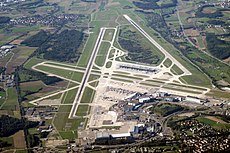 The Saint Moritz Airport is a major connection n the Lorecian Community. The service sector comprises the majority of the Nidwaldester GDP and in recent years the numbers saw an increment due to the enlargement of the information and technology sector. Nidwalden has positioned itself as one of the most technologized countries in the Lorecian Community, the city of Vaduz in the south of the country has the highest number of startups per person in Lorecia and has been named as one of the best cities of Astyria to start or move a technology focused enterprise. The city Lech is one of the homes of the modern car in Astyria, the automotive industry comprises also an important part of the GDP as it is considered to be one of the most competitive and innovative of the world. However, since the 80s the Nidwaldester society has faced an important environmental conscience that has take it to produce more eco-friendly products in the industrial sector, changing the aluminium production for high-value-added, non-polluting industries, such as cosmetics and biothermics. Energy and InfrastructureThe electricity generated in Nidwalden is fully produced by the state-owned company NidEnergie, in 2018 a 95%of Nidwalden’s energy was made by renewable energy methods such as hydroelectric power stations and windparks, the geographical situation of Nidwalden, with a great amount of lakes and rivers and high mountains gives it an enormous advantage. Nidwalden has one of the most dense rail network in Lorecia. The vast majority of the network is operated by the national company [ name here ] which has focused its business into improving the reliability and quality of service of its conventional rail network. The difficult terrain of Nidwalden and the short distances between cities and towns has been a challenge for the company in building high-speed networks, there are currently three major high-speed lines, Cologne-Saint Moritz, Cologne-Vaduz and Vaduz-Saint Moritz, the three of them are connected with Noordenstaat and Scanonia. The mountainous country has five international airports, Cologne International Airport, Vaduz International Airport, Aspen International Airport, Lech Airport and Saint Moritz International Airport, the last one is the largest one and a major connection hub with the rest of the Lorecian Community and Astyria for the flag carrier airline, Air Nid, the Aspen International Airport operates international flights only during winter and has only ten destinations in total. However, most of the cities in Nidwalden count with facilities for airplanes. DemographicsEstimations done in 2018 agreed that the population of Nidwalden was of 5,323,933 inhabitants. As the rest of the countries of Lorecia, Nidwalden increased its population together with the industrialization of the economy between 1800 and 1990, however, this growth has been slow and stable, estimations done by specialist of the World Assembly say that the Nidwaldester population will remain without exceeding the number of 5,400,000 until 2030. Immigration and an exceptional quality of life is what give to the population of Nidwalden this character of stable. As a developed country in Lorecia, Nidwalden counts with a vast community of foreigners, 23.3% of the population has recognised having a foreign background from his close past. Most of the immigration comes from neighbouring countries like Scanonia, Noordenstaat, Fyngaria or Albeinland thanks to the possibilities given by the free movement accords of the Lorecian Community. During the early 2000s several social institutions and political parties (mainly from left backgrounds) expressed its concerns for an increasing xenophobia in the Nidwaldester society and populist political campaigns, in reply to this, the Ducal government stated that ‘the situation of xenophobia was unacceptable in a country like Nidwalden’, in the following years actions were taken in schools and in the social scene to ensure rapid and unproblematic integration of foreigners. Healthcare Astrid Lindgren Hospital, Cologne. ReligionNidwalden has no official religion, church and state has been officially separated since 1917 and the religious freedom is guaranteed by the constitution since then. However, a survey done by the official agency of statics of the Grand Duchy showed that Protestantism remained as the main religion with a 57.9% of adherence in the population, it was followed by atheists and/or agnostics with a 40.7%. According to political observers, Nidwalden is one of the most secular countries of Astyria, for many this process of secularization began during the protestant reformations of the churches where new ideas were spread along the country. In 1837 civil marriage was recognized, and in 1861 the state took over the running of public cemeteries. In 1907 divorce was legalized and, in 1909 all religious instruction was banned from state school, much more time after the church reformation the innovative Prime Minister Ludwig Mann (1903–1911) completed the separation of the church from the state. The protestant reform of the church and then the secularization process of Nidwalden is thought to be one of the reasons why the society of the small country has been very open and receptive to innovative laws and ideas. In modern times the population has supported the recognition of Same-sex unions in 1989 and the later Law that approved Same-sex marriage in 2001, years before, in 1984 Nidwalden was also one of the first countries to fully legalize the Abortion. Largest citiesThe population of Nidwalden is equally divided between cities. Historically, Saint Moritz and Cologne had been the most populated cities of Nidwalden, today the cities have 746,878 and 255,464 inhabitants respectively and both cities are the financial and gubernamental heads of the Grand Duchy. As one of the most urbanized countries in Astyria, the government has an urban planning agency that ensures a sustainable growth and a better future for the cities.
EducationLike the neighbouring countries of Noordenstaat and Scanonia, Nidwalden has a developed education in which students have a performance that overpass regional averages. The education system is responsibility of the Ministry of Education in all the Nidwaldester territory. Optional Kindergarten is offered for all children between one and six years old, after it, primary and secondary school are compulsory and last six years each one, secondary school is divided between the first three years and then another three years, in the last two years children can choose an ‘orientation’ where the education imparted more specialized in different areas. All children graduated from secondary school are able to speak English on level B2 and a third optional language on level B1. Nidwalden has a long tradition of higher education, most universities are public institutions and students can attend without fee payment. The country has one of the highest rates of student enrolment in Universities, this contributes on having a very specialized workforce. Nidwalden is home of the Kiefern Gruppe, a group of the best five public universities, the name of the group is often synonymous of academic excellence.
CultureNidwalden shares many strong cultural and historical ties with the neighbouring countries of Scanonia and Noordenstaat. The country has been historically one of the most progressive cultures of the world, Nidwalden was one of the first countries in Astyria and the world to allow same-sex unions in 1989, abortion in 1984 and legal same-sex marriage in 2001. Modesty and social equality are important parts of a culture that has been shaped through history by major intellectuals, artist and new thinkers that later became important for the new waves of think in Astyria. Architecture and designNidwaldester design and architecture has grown while being characterized by the simplicity, minimalism and functionality, it is a style worldwide famous. Initially influenced by the Bauhaus school, Nidwaldester designers and architects took different ways to persuade a different style, however, the culture for design in Nidwalden dates from long before the 20th century, despite the small size of the country, different areas developed different styles, this contributed to a major diversity in architectural styles. The most typical constructions along the central valley date from the Middle Ages and follow Romanesque styles. Gothic architecture flourished during the high and late medieval period and with this large Gothic influence, castles started to be constructed appearing through the whole country and being today the most distinctive architectural pieces of Nidwalden, most of them are located in the cores or up in hills near towns, where half-timbered buildings became part of the Nidwaldester culture.The progressive industrialization and the years of stable growth helped to develop a more modern side of the architecture in Nidwalden, large cities like Saint Moritz, Cologne and Lech are known for its modern buildings of distinctive Nidwaldester Design. The Mégeve County Councils and the Bremen City Hall, the Kirchberg borough of Cologne, the skyscrapers of Saint Moritz and many of the contemporary developments in the cities of Vaduz and Lech are just some of the most recognised pieces of modern Nidwaldester design. |
||||||||||||||||||||||||||||||||||||||||||||||||||||||||||||


